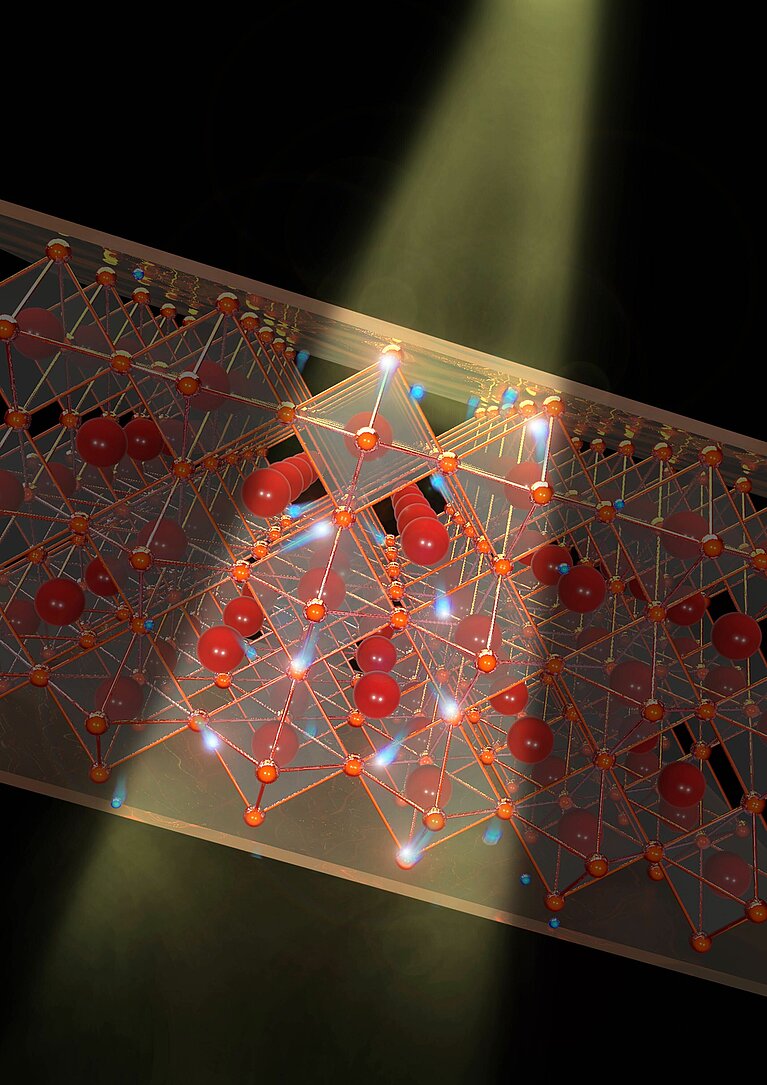April 22, 2021 - by Simone Ulmer
During the last decade, perovskite solar cells (PSC) have become the preferred technology in the race for efficient and cost-effective solar energy. They are based on metal halide perovskites, and their chemical structure corresponds to that of ABX3 — where A is a monovalent cation such as caesium, methylammonium, or formamidinium; B is a divalent cation like lead, tin, or germanium; and X is an anion e.g. iodide, bromide or chloride.
"Since their emergence from dye-sensitized solar cells (DSSC) in 2009, PSCs have been at the forefront of research on cheaper solar cell technologies," says Paramvir Ahlawat, Ph.D. student in the group of EPF Lausanne professor Ursula Röthlisberger.
Researchers have particularly focused on the cubic phase of perovskite solar cells, the so-called α-formamidinium lead triiodide (FAPbI3), which is what renowned solar cell researcher and EPFL professor Michael Grätzel is also studying. Last autumn, in collaboration with other research groups, a method was published in October 2020 in the scientific journal Science describing how solar cells based on a room-temperature stable perovskite structure of FAPbI3 can be achieved. Computer simulations on the CSCS supercomputer "Piz Daint", carried out by the research group of EPFL professor Ursula Röthlisberger, provided the chemical blueprint for this method, so to speak.
Now, in collaboration with researchers from the Ulsan National Institute of Science and Technology (UNIST), Korea, the research groups of Grätzel and Röthlisberger have succeeded in another joint experimental-computational study to increase the efficiency of FAPbI3-based perovskite solar cells through a novel chemical synthesis process.
Crystal defects destabilize perovskite solar cells
In the synthesis of these solar cells, one of the main problems stems from the "X" components in the chemical ABX3 structure, the halides. Specifically, lattice defects the in the crystal — known as halide vacancies — easily form during the manufacturing process, making the PSC unstable and leading to reduced efficiency. However, based on computer simulations carried out on CSCS’s "Piz Daint", the EPFL and UNIST researchers succeeded in understanding this mechanism at the atomic scale and developed an effective method that suppresses the formation of such defects.
The researchers recently published the results of this new study in the scientific journal Nature. These findings showed that anion engineering is highly suitable for suppressing these lattice defects in perovskite films: The anion engineering approach led to improved solar cell efficiency of up to 25.6 percent and operational stability of at least 450 hours. However, the certification of the solar cells is slightly lower: "The solar cells produced with the new method achieved a power conversion certified record efficiency of 25.21 percent, thereby surpassing other solar cell technologies like the current market-leader, polycrystalline silicon", says Röthlisberger. "
According to the first-principles molecular dynamics simulations of Röthlisberger's research group, the anions of the salts of formic acid, called formate (HCOO-), are best suited to suppress halide vacancy defects and can even improve the morphology of the thin films. According to Ahlawat, HCOO- was shown to coordinate strongly with the cation of lead (Pb2+), slowing down the crystallisation process and leading to larger stacked grains of thin films.
References:
Jeong J, Kim M, Seo J, et al. Pseudo-halide anion engineering for α-FAPbI3 perovskite solar cells. Nature (2021): https://doi.org/10.1038/s41586-021-03406-5
This article may be used on other media and online portals provided the copyright conditions are observed.
